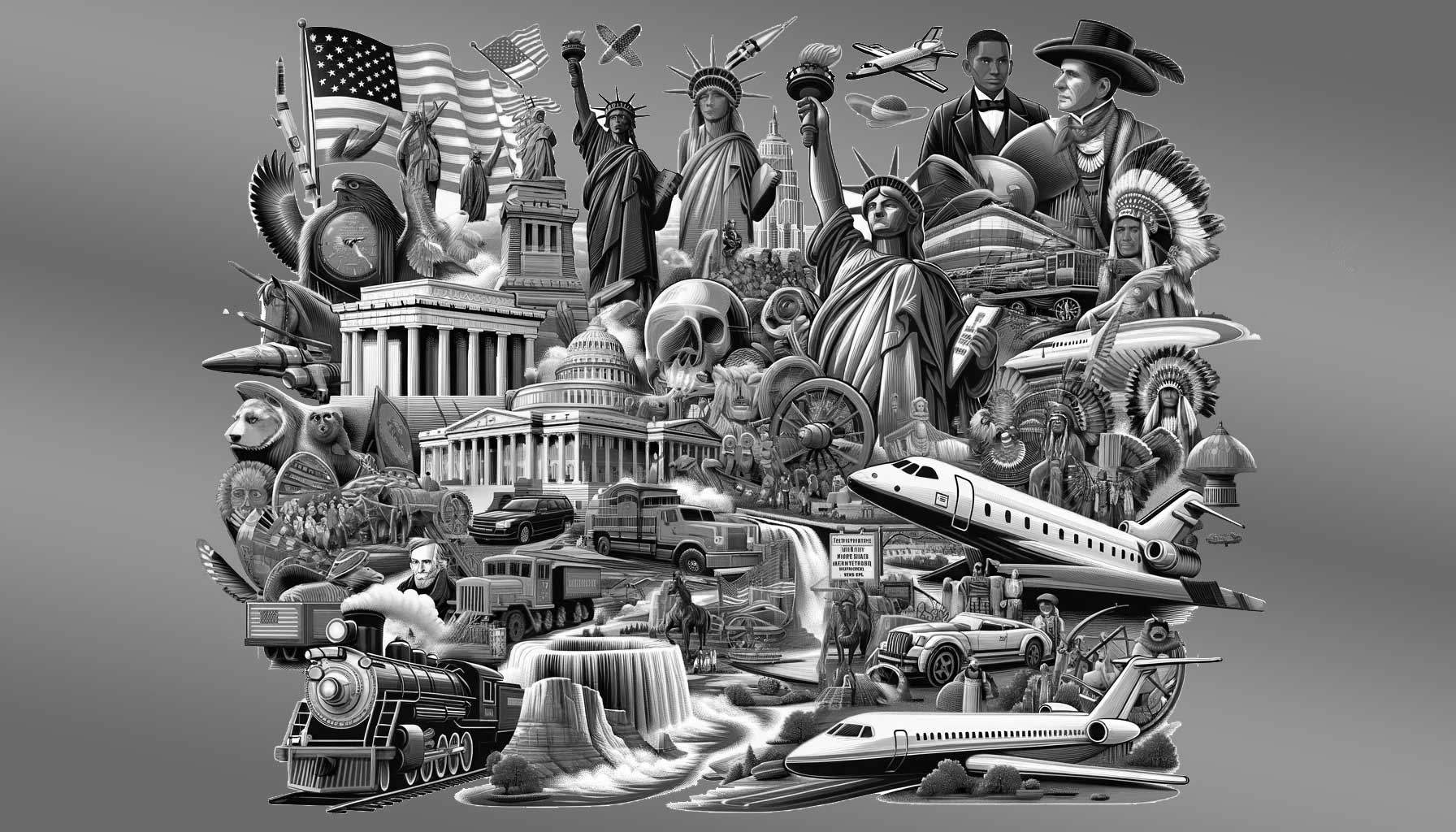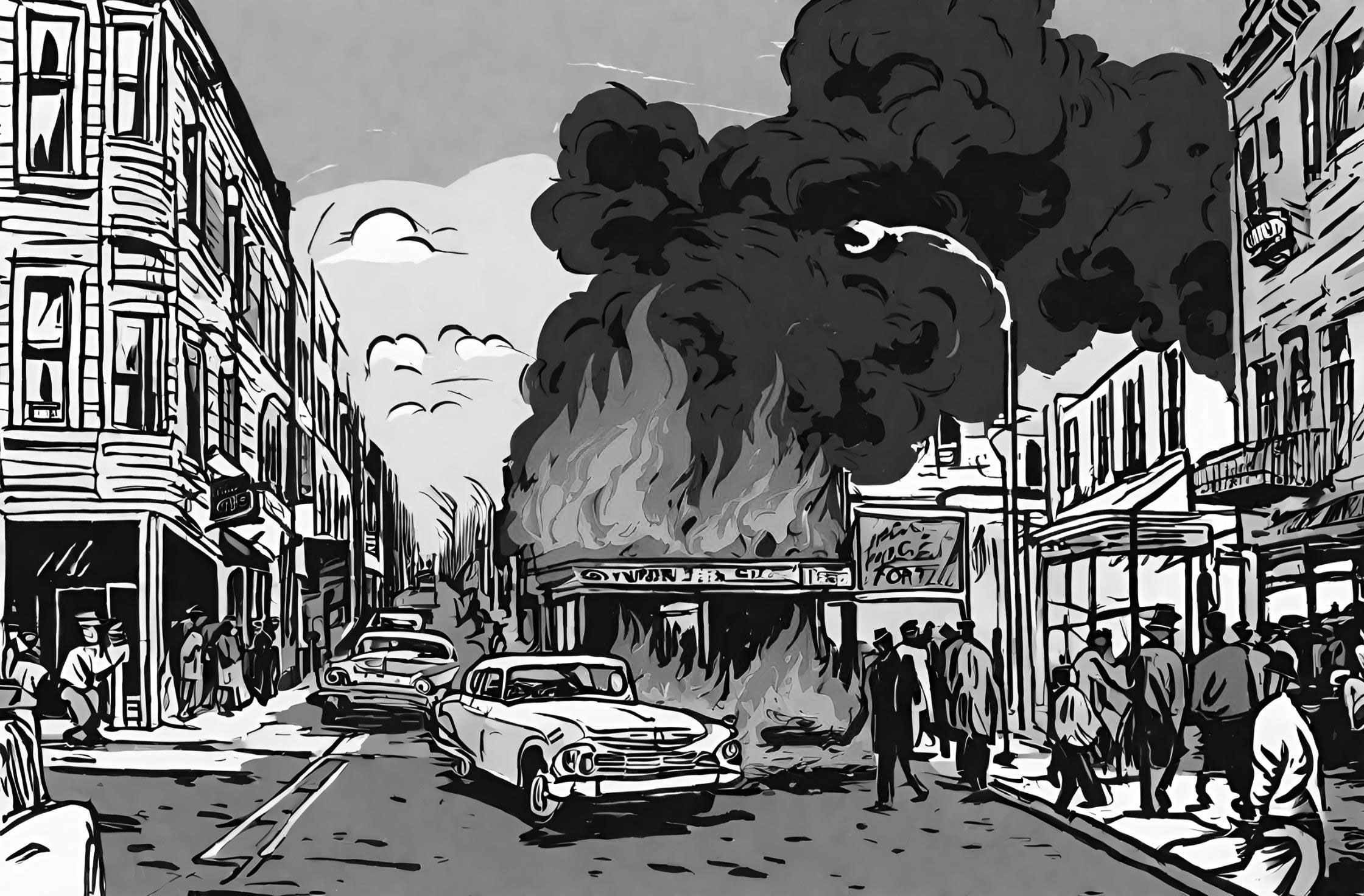Flashback to July 18
American History

1914
First electric traffic light is installed, at Euclid Ave. and East 105th Street, Cleveland, Ohio, USA.
Read moreOn August 5, 1914, a revolutionary development in how society maintains road safety occurred, when the first electric traffic light was installed in Cleveland, Ohio, USA. The installation took place at the intersection of Euclid Avenue and East 105th Street, marking a historic milestone in traffic control. This development modernized the urban traffic management and heavily influenced urban development.
Traffic lights are indispensable in today’s urban society, controlling the flow of traffic and enhancing road safety. The introduction of the electric traffic light wasn’t just an innovation—it was a much-needed solution for the increasing levels of urban traffic at the turn of the 20th century. However, invented in an era when horse-drawn carriages were still prevalent, the evolution of the electric traffic light is significant to understand.
No longer was traffic controlled by policemen, patrolmen, or physical signs. With the installation of the first electric traffic light in 1914, the roads had a machine-controlled, consistent, reliable, and objectivistic way to control traffic. This revolution in traffic management began at the intersection of Euclid Avenue and East 105th Street in Cleveland.
The system installed on this day was not like the multi-colored, universal system we are familiar with today. Initially, the setup only consisted of two colors: red and green, and it was a simple, mechanically timed system. The man responsible for this transformative innovation was Lester Wire, a Salt Lake City policeman who thought of creating an electric system signaling ‘stop’ and ‘move’. The idea was a pivoting, round box attached to a pole with ‘stop’ and ‘go’ painted on it.
However, it was the American Traffic Signal Company that took charge of installing the first citywide electric traffic light system in Cleveland, Ohio. They utilized Wire’s idea and expanded on it. They developed the first electric traffic signal system that included both red and green illuminated signs, supported by a manually operated switch model.
Euclid Ave and East 105th Street became the pioneer of this innovation, and the intersection has since been a significant landmark in Cleveland. The era of automatization had indeed begun, transforming the urban landscape, reducing traffic congestion, and providing safer roads for pedestrians and motorists alike.
The progression from this initial electric traffic light to the universally recognized three-colored system of today reflects the evolution transportation has seen over the century. Today’s modern traffic lights include sensors and sophisticated automated systems to gauge traffic flow and adjust the timing of the lights accordingly—a stark contrast to the manually operated system of 1914.
One fundamental reason these electric traffic lights were so important was due to the rising number of automobiles around the same period. The industrial revolution had propelled the production of cars, leading to a sudden surge in road traffic. Therefore, the need for a system to control this increasing traffic became an urgency, paving the way for the first electric traffic light’s installation.
Ultimately, the introduction of Cleveland’s first electric traffic light in 1914 marked a movement toward greater efficiency and safety in urban environments. It laid the foundation for traffic management systems around the world, transforming road safety and influencing urban development. The installation at Euclid Avenue and East 105th Street, Cleveland, Ohio, is not just a testament to innovation but a symbol of how constructive change can impact society profoundly and sustainably.
We strive for accuracy. If you see something that doesn't look right, click here to contact us!
Sponsored Content

Race riot in Harlem,…
The race riot in…

US army air service…
On July 18, 1914,…

President Harry S. Truman…
On July 18, 1947,…

Lemuel Haynes, escapes from…
Lemuel Haynes, a former…

Rebecca Schaeffer is shot…
On July 18, 1989,…

In an event very…
On July 18, 1996,…

